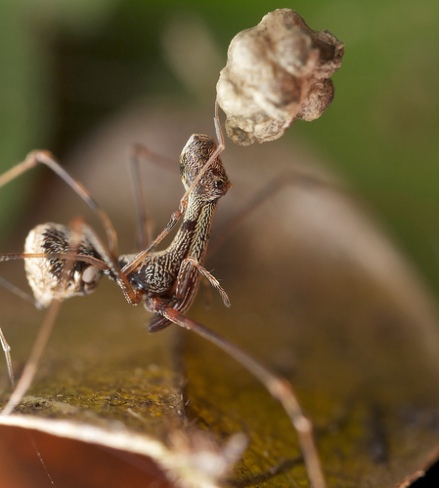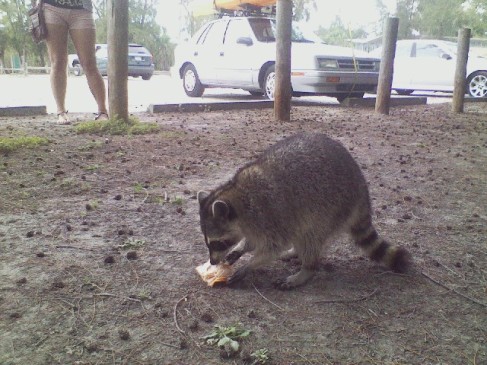Doesn’t matter. Animal or human. We don’t slaughter either. The atrocities in “The Cove” was immoral to both humans and animals: slaughtering dolphins in the daily, ruthless manner shown, and ignoring the mercury poisoning in dolphin meat sold to humans for food. What’s sad is that this documentary was so powerful, yet it seemingly had little effect on everyone. It ends with Ric O’Barry standing in the ignorant crowds of Japan, a TV strapped to his chest (like at the global animal protection conference!). However, as the camera pans away, there was hope in the few people that walked up to him staring in shock at the dolphins slaughtered on his TV.
This documentary made me shake my head at humans, but regained my faith in them as I watched Ric’s dedication to dolphins. Even though he helped start the “Flipper myth”, he still showed his dedication and companionship with dolphins throughout his career, to when Flipper’s death changed him–to the very end. Regardless the arrests and the physical threats by the Taiji fishermen.
The “spy” style to the documentary was adrenaline-rushing but was appropriate to lure our attention. It wasn’t too flashy of a documentary, either. It felt realistic as we followed Ric’s crew, even in its message: you gotta do what you gotta do for what’s right, even when it’s wrong. That was a lot of sneaking in. Their bravery was inspiring. I admired the interesting crew Ric had: the married couple free-style divers, the adrenaline king who climbed the world’s highest structure, and even artists to disguise Ric’s cameras with fake boulders, trees, etc!!!! (We artists CAN make a difference, too!) The amount of pushing and hollering they received from the fishermen–with their hooks, harpoons, signs, cameras–was hard to watch. Especially since they had to witness that one baby dolphin trying to make its way toward them, asking for help. That was upsetting. Sometimes I feel like people don’t do anything because they’re too disturbed by the truth–but the truth motivated Ric’s crew even more. Sometimes the graphic, bloody truth is necessary to open up people’s eyes…
Speaking of truth, the documentary was also very factual regarding the uselessness of dolphin meat, the effect its mercury had on thousands of people (especially students of Taiji), and what even goes on at those global meetings about animal protection. Even the methods the fishermen used to lure the dolphins and kill them was educational–it validates what’s going on. It raises awareness–better than no one knowing anything about it, even though that number was very high. Nonetheless, the film, and Ric’s devotion to traveling around educating people, raised people’s awareness. I mean, he made the film, and here I am watching it, learning about it, reflecting on it, and hopefully sharing and spreading awareness in my little class blog…:/
About animal captivity. I have mixed feelings about it because it’s helped science progress learning about all sorts of species. Zoos have brought people together to love, appreciate, learn about animals, and interact with them. Not everyone can just go out into the wild like most scientists to study animals–well, they COULD. If they wanted to. ANYWAY, I am completely sentimental and aware of the cons. We saw in “Blackfish” and “The Cove” how the noises created by excited crowds, and all that banging from the boats or hand commands, has stressed out animals separated from their families. I do not blame those in captivity. I can’t imagine how scared, isolated, and confused I’d be if I were an animal in captivity. So, of course, I completely support the recent documentaries studying stressed animals in captivity.
I can’t say I want to go to Sea World and other places like it, now that I know how those sea creatures got there…All I see is Taiji’s fishermen stabbing dolphins, pulling them up with hooks into their boats, crushing them or separating them with their boats, and BANG BANG BANG on the boats–just to give water shows their circus creatures.  They did not need to kill SO many dolphins every day, for meat that on one really likes or knows about, in the method they used…
They did not need to kill SO many dolphins every day, for meat that on one really likes or knows about, in the method they used…
Overall, if you’re going to study creatures, why not immerse yourself with them and live next to them instead of capturing them? If you’re going to kill them for food, don’t SLAUGHTER, don’t scare them, don’t OVERKILL…





























